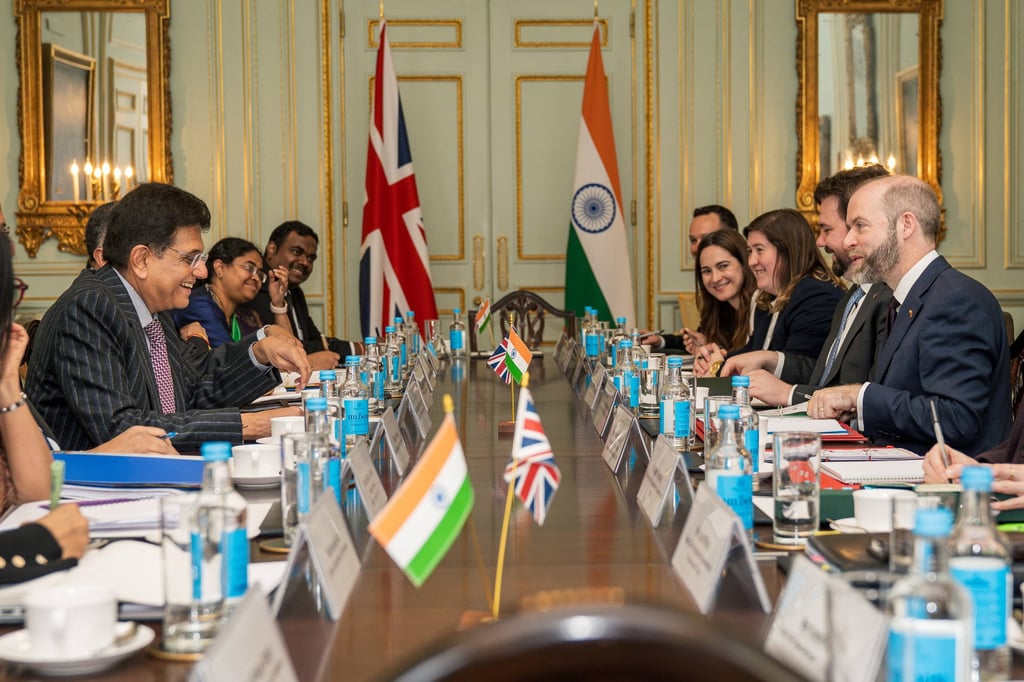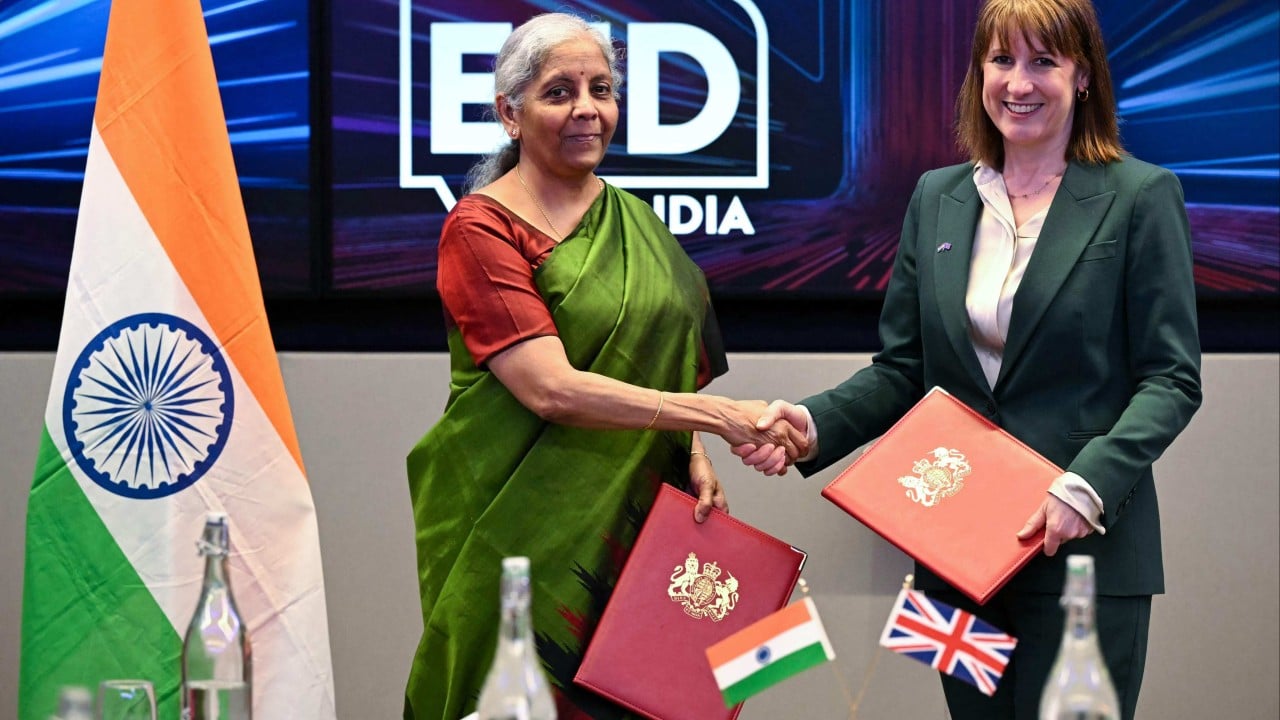India and Britain are poised to sign a long-awaited free-trade agreement during Prime Minister Narendra Modi’s visit to London this week, a deal analysts see as a signal that New Delhi is willing to shed its traditionally protectionist stance and engage more deeply with Western partners amid rising global trade tensions.
Advertisement
The pact, which follows three years of negotiations, is expected to be finalised during Modi’s bilateral meeting with British Prime Minister Keir Starmer, which begins on Wednesday. According to Indian officials, the two leaders will also review the India-UK Comprehensive Strategic Partnership and discuss matters related to security and technology.
British estimates project the deal will boost bilateral trade by £25.5 billion (US$34.13 billion) annually by 2040. Trade between the two countries reached £42.6 billion last year, making India the UK’s 11th-largest trading partner.
“I think this [India-UK FTA] is also about signalling from India that it is open to better integrating with the global economy – that it is ready to sign difficult trade agreements,” said Harsh Pant, a professor of international relations at King’s College London.
If approved by the British parliament and India’s federal cabinet, the agreement would take effect within a year, removing trade barriers and granting duty-free access to most goods.

India has had a mixed track record with free-trade agreements, with several deals over the past two decades leading to persistent trade deficits and, in some cases, domestic backlash from industries and states concerned about import surges.

